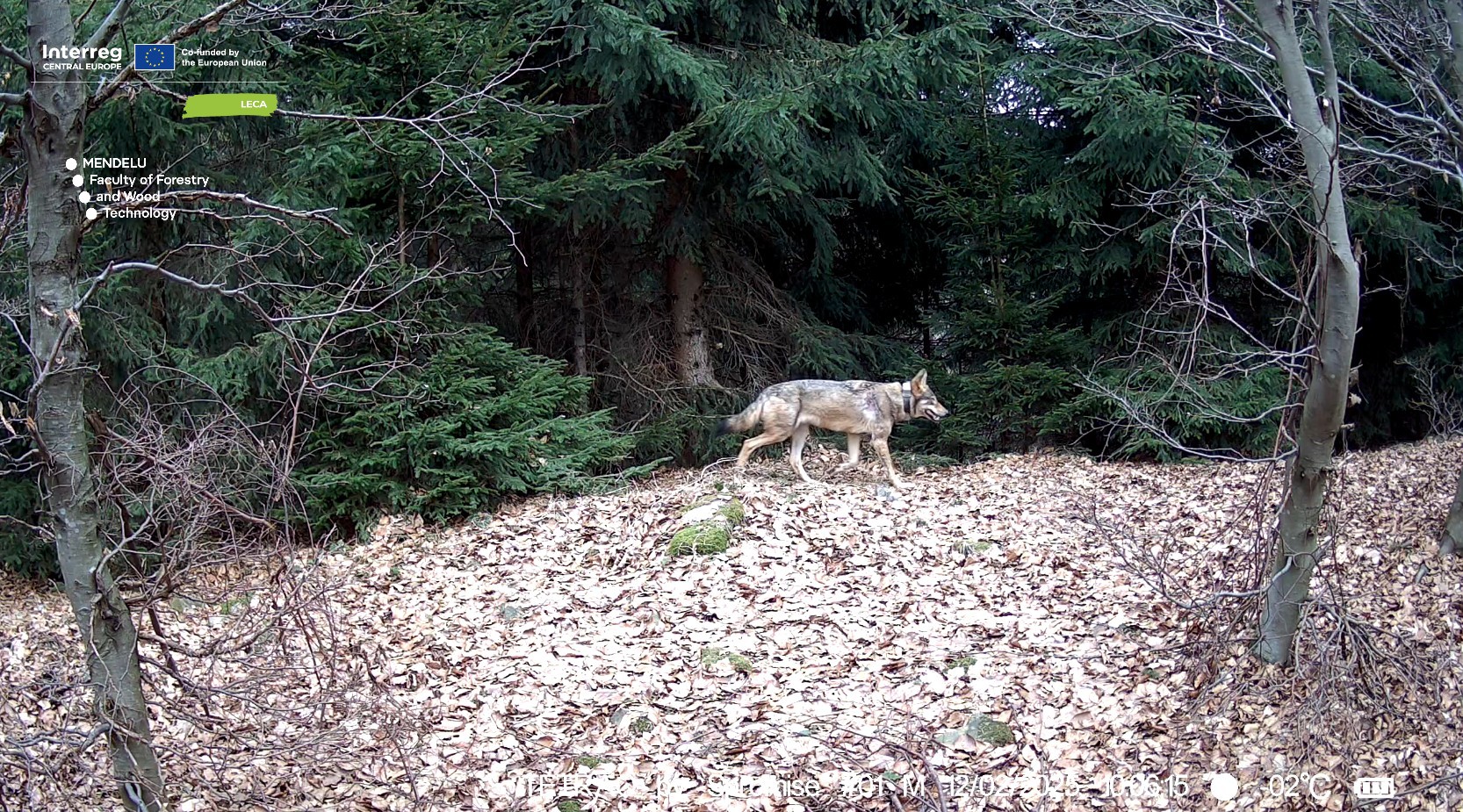Deep in the forests of Central Europe, wolves roam vast landscapes, crossing borders, often unnoticed. How do they move? Where do they hunt? What challenges do they face in a world increasingly shaped by humans? Thanks to GPS telemetry, we are finding the answers.
As part of the LECA, five wolves in two key regions—Beskydy-Kysuce on the Czech-Slovak border and the Nanos-Hrušica Plateau in Slovenia—have been fitted with GPS collars. These devices provide a wealth of data, helping us track movements, understand feeding behavior, and study interactions with human activities. Ultimately, this data helps us develop better strategies for protecting both wolves and livestock on pastures.
Hanka, Lucka and Zuzka: The female wolves of Beskydy
The Beskydy-Kysuce pilot area has seen a continuous recovery of the wolf population since 2019. Here, we have equipped three females with GPS collars. Their stories are as different as their tracks. Zuzka is severely injured and roams alone between different wolf territories as a floater. Lucka moves with one of the resident males. A third wolf named Hanka is a disperser, her origins are still unknown. Thanks to additional data from collars and further genetic analyses we will get more insight. Far now, they have shown us that movements of monitored females stretch across hundreds of square kilometers, proving that wolves know no borders, and reinforcing the need for international cooperation in conservation is thus essential.
The collected data supports ongoing research and informs policymakers, conservationists, and local communities about the wolves’ presence and habits. Hunters and foresters in the region play a key role, helping to identify wolf hotspots and sharing their observations from the field.
Jakob and Martina: The Slovenian wolves
In Slovenia, telemetry work is equally essential. The first collared wolf, a young male named Jakob, was captured in November 2023. Weighing just 23 kilograms, he was less than a year old. Local hunters, who had long observed wolves in the area, named him after a respected elder who had taught them about wildlife. Jakob’s collar provided seven months of valuable data, recording over 2,200 GPS points before its battery ran out.
Exactly one year and one day after Jakob’s capture, another wolf joined the project. This time, it was a female, named Martina, in honor of Saint Martin’s Day. Since her release, Martina has already provided nearly 1,000 GPS locations, revealing patterns of movement that suggest she and Jakob may be from the same pack—possibly even siblings.
Collaboration is key
Wolf monitoring is not a solitary effort. In both study areas, hunters, foresters, and researchers work together to piece together the wolves’ stories. Hunters, with their deep knowledge of the land, helped set up the first camera traps and provided crucial real-time information on wolf sightings. They were even present at live captures, together with veterinarians, assisting in taking measurements and naming the wolves.
This collaboration does more than collect data—it fosters understanding. By sharing GPS insights, camera trap images, and movement data, researchers are demystifying wolf behavior and helping to bridge gaps between conservation and local communities.
Why it matters
The GPS telemetry data collected in both Slovenia and the Czech-Slovak border region will help harmonise monitoring efforts and guide strategies for human-wildlife coexistence. Wolves have been absent in some of these areas for decades. Understanding their return, movements, and impact is crucial for informed decision-making.
Through technology, teamwork, and transparency, we are learning more about these elusive predators than ever before. And as wolves continue to reclaim their place in Central Europe, we are committed to ensuring that their presence is understood, respected, and protected.
Wolf female Zuzka shortly after collaring in Vsetínské Beskydy.
Martina resting at the resident pack’s rendezvous site in the core of the Nanos-Hrušica Plateau.
